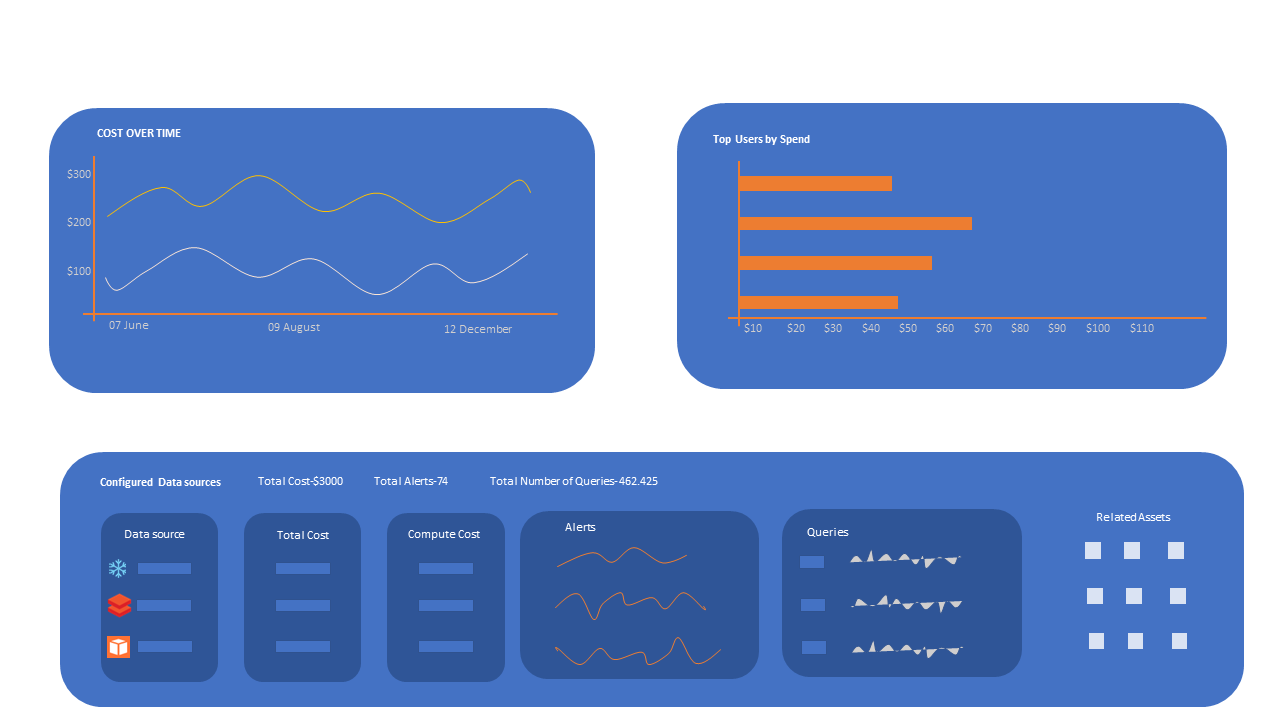Spend and Performance Observability
Compute(Spend and Performance Observability), in the context of data environments, refers to the computational resources and processing power required to perform various tasks related to data management and analytics. These tasks can encompass data ingestion, transformation, analysis, machine learning, and more. Compute resources can include servers, CPUs, GPUs, memory, and cloud-based virtual machines.
Some key aspects of compute in data environments are data processing, machine learning and AI, real-time analytics, and scalability.
Aligning Compute with Data Observability
Data observability is the practice of monitoring and managing the health, performance, and quality of data in real-time. It involves tracking various metrics, identifying anomalies, and ensuring data reliability. Data observability is critical in optimizing compute for several reasons:
Identifying Bottlenecks:
- Data observability tools can pinpoint bottlenecks and performance issues in data pipelines and processing workflows.
- By identifying these bottlenecks, organizations can allocate compute resources more efficiently to optimize data processing.
Cost Optimization:
- Monitoring compute resource utilization helps organizations identify over-provisioned or underutilized resources.
- This insight enables cost optimization by right-sizing compute resources based on actual workload requirements.
Data Quality Assurance:
- Data observability ensures that data quality remains high throughout its lifecycle.
- By detecting data anomalies and errors early, organizations can prevent compute resources from being wasted on flawed data.
Proactive Issue Resolution:
- Data observability tools provide real-time alerts for data-related issues.
- This allows organizations to proactively address problems, minimizing downtime and compute resource wastage.
Resource Allocation:
- With a clear view of data workloads, data observability helps organizations allocate compute resources strategically, ensuring critical tasks receive the necessary processing power.
Compute serves as the foundational infrastructure within data environments, driving essential functions such as data processing, analytics, and machine learning. Nevertheless, optimizing compute resources is a complex endeavor, given the dynamic and intricate nature of data. This is precisely where data observability emerges as a crucial ally.
Spend and Performance Observability
Spend and performance observability, within the framework of ADOC (Acceldata Data Observability Platform), pertains to the capability of monitoring and gaining insights into an organization's spending and performance metrics. This entails the meticulous tracking, analysis, and visualization of both financial and performance data. The objective is to gain a comprehensive understanding of how resources are allocated, utilized, and their contributions to the overall success and performance of the organization.

Spend Observability: Spend observability is focused on monitoring and analysis of the financial aspects inherent to an organization's activities. It encompasses the systematic tracking and analysis of spending patterns, expenses, and costs across diverse data sources, users, or initiatives. This encompasses the oversight of budget allocations, expense tracking, the identification of cost-driving factors, and ensuring alignment with financial objectives and targets. Spend observability empowers organizations to gain transparency into their financial well-being, make informed decisions pertaining to resource allocation, and pinpoint areas ripe for cost optimization.
Performance Observability: In contrast, performance observability is centered on the monitoring and analysis of the operational and performance metrics associated with an organization's business initiatives. This entails the tracking of key performance indicators (KPIs), metrics, and benchmarks to evaluate the effectiveness and efficiency of various aspects such as queries, alerts, or other attributes that are pivotal to the organization's overall performance. Performance observability equips organizations with the tools to spot bottlenecks, inefficiencies, or areas requiring enhancement, ultimately leading to improved performance and more favorable business outcomes.
Combined Observability: The convergence of spend and performance observability provides organizations with a comprehensive view of their operational and data performance. This holistic perspective enables them to discern the intricate relationship between spending and performance metrics, pinpoint opportunities for cost reduction or performance enhancement, and make data-driven decisions that drive growth and profitability.
Visualization plays a pivotal role in ADOC dashboards, serving multiple purposes, including enhancing comprehension and decision-making, rendering spend and performance data more accessible, encouraging exploration and analysis, and effectively conveying findings to a diverse range of audiences. By interacting with various elements within the dashboard, users can delve into the data displayed in greater detail.